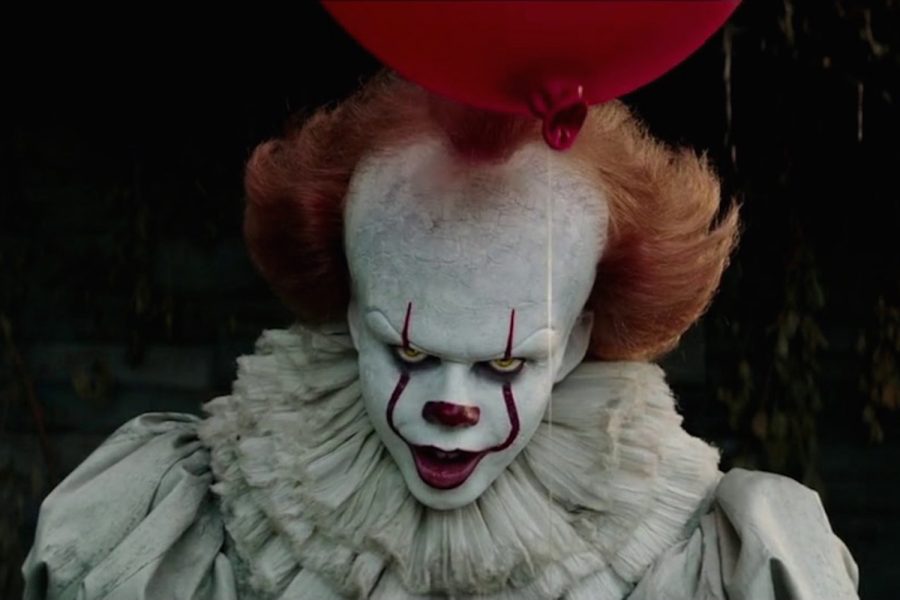‘It Chapter Two’ isn’t clowning around
After a two year wait (and a 27 year wait for the Losers Club), audiences finally returned to Derry, Maine for It Chapter Two. This time, the Losers return was far more frightening than the return of their 90s miniseries counterparts.
Bill Skarsgard as Pennywise the clown.
September 15, 2019
If you’ve watched the ‘90s version of It, it probably won’t come as a surprise that 2019’s It Chapter Two is significantly more visually interesting than its miniseries counterpart. For the most part, this plays to its advantage.
Unless you were a child when you watched the ‘90s version of It, it’s unlikely that you found it to be scary. In fact, most critics consider the visual effects to be cheesy at best and laughable at worst. To be fair, the miniseries was made in the ‘90s and didn’t have the budget of a major motion picture, but the only thing truly creepy about it was Tim Curry’s performance as Pennywise.
The 2019 version, on the other hand, didn’t hold back when creating detailed monsters and special effects. The creepy creatures Pennywise threw in the paths of the now-grown-up Losers were much more disturbing than the ones they encountered as children, which makes sense. Adults are harder to scare, so taking a bolder approach with the visual horror was the right move.
However, while the bolder approach worked in making Pennywise feel more powerful than he did in the miniseries, It Chapter Two made the same mistakes it did in the first— it started off with the most graphically violent moment of the film.
In Stephen King’s novel, two gay men are brutally attacked at a carnival in Derry, and one of them is thrown off a bridge and killed. King based this on the actual murder of a man named Charlie Howard. In the miniseries, they decided to omit this scene, but in It Chapter Two, the scene is brought to life in horrific detail.
At the end of the scene, the man has his heart eaten by Pennywise, but this is the only evidence of the clown’s involvement. It’s never made clear if the boys who killed him were being influenced by Pennywise, like Henry Bowers’ character was in both versions, or if they are acting on their own accord.
The vagueness makes the scene feel unnecessary to the plot, as well as needlessly violent. It adds nothing to the world, because there are a handful of other scenes that show most of the citizens of Derry are homophobic. This comes into play when it’s revealed that Richie is gay, and the realism of the beating feels out of place when compared to the rest of the horrors of Derry. The horror in It is creepy, but not brutal.
The other obvious difference between the miniseries and It Chapter Tw* is the decision to include flashbacks of the Losers childhoods throughout the film. The flashbacks added to their characterization in a way that the miniseries didn’t and made them feel less one-dimensional. Their de-aged, computer-generated faces were a bit distracting, but overall it was a win for It Chapter Two. The decision brought the film’s run time to nearly three hours, which is equivalent to watching every episode of the miniseries back to back. However, It Chapter Two didn’t feel too long.
Overall, It Chapter Two wasn’t quite as good as the first chapter, but both were better than the miniseries due to the visual effects and creepier feel. It accomplished what a remake should: improving on the faults of the original, but staying true to the theme. Of course, it is not faultless, but it’s worth a watch for fans of the original and horror alike.



